Director: Lewis Teague
Length: 1h 34min
Genre: Comedy, Horror, Thriller
Rating: ⭐⭐⭐⭐⭐ (5 out of 5)
Is Cat’s Eye truly a standout in the realm of horror anthologies, or is it simply a product of childhood nostalgia? For many, this 1985 Stephen King creation holds a special place, but revisiting films from our past can be a risky endeavor. Do they truly live up to our fond memories, or is the magic merely a trick of time? While some childhood favorites in the horror genre may not withstand the test of time, Cat’s Eye consistently proves its enduring appeal.
Despite internet rankings placing it lower than expected in the horror anthology hierarchy, Cat’s Eye remains a top-tier production and a personal favorite. While it may not possess the groundbreaking legacy of Dead of Night or the comic book charm of Creepshow, nor the high-profile direction of Twilight Zone: The Movie, Stephen King’s Cat’s Eye movie delivers something uniquely captivating: a blend of campfire-style storytelling infused with King’s signature cynical wit.
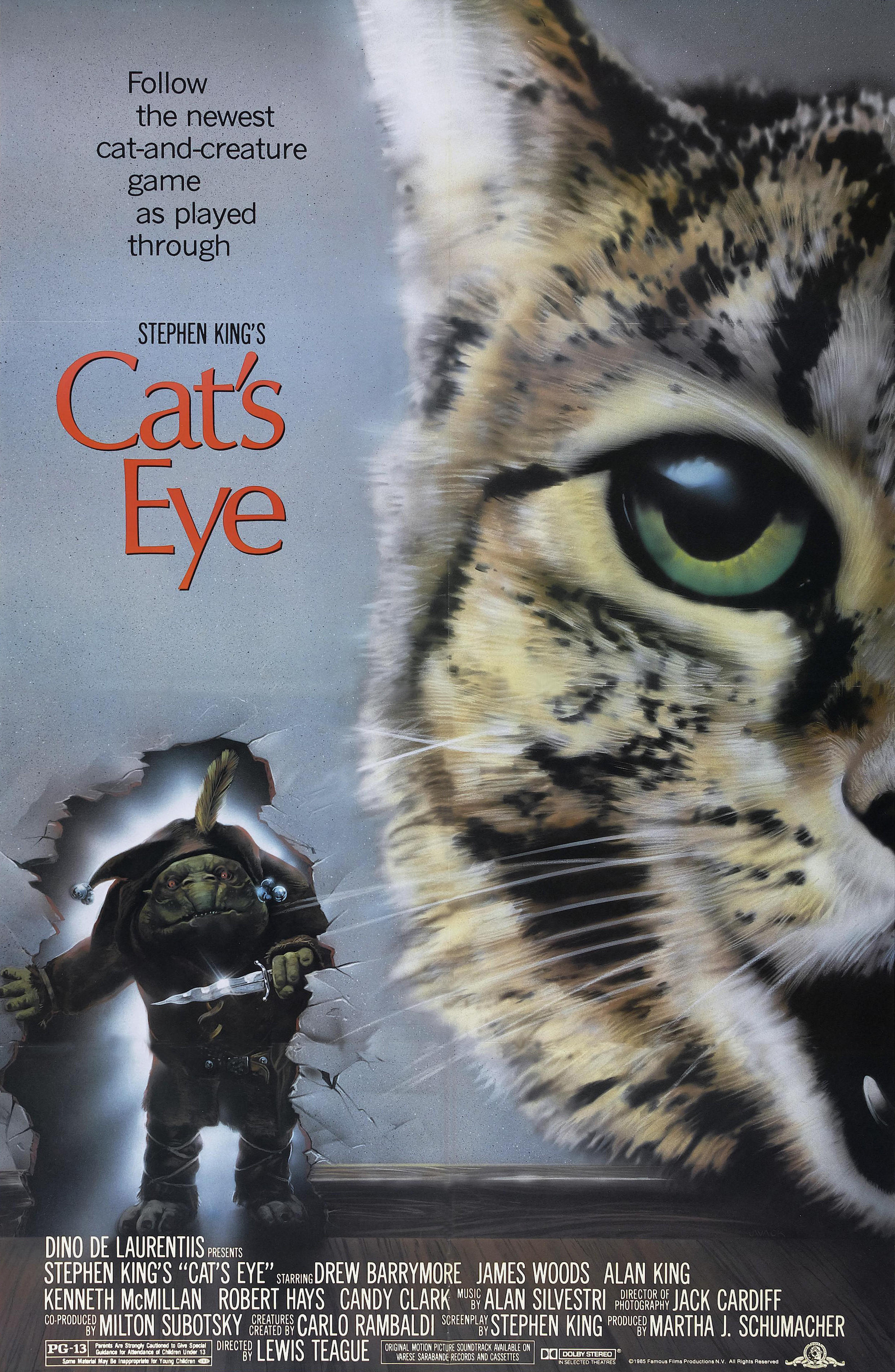 Cat's Eye movie poster featuring a cat's eye and tagline
Cat's Eye movie poster featuring a cat's eye and tagline
Following the success of Creepshow, Stephen King, absent from Twilight Zone: The Movie, channeled his anthology prowess into Cat’s Eye. Instead of King, Twilight Zone tapped Richard Matheson, a seasoned Twilight Zone writer with an impressive catalog including The Shrinking Man and Trilogy of Terror. Matheson, like King, excelled at crafting gripping, twist-filled short stories perfect for the anthology format, influencing horror giants like Ira Levin and William Peter Blatty.
While Twilight Zone: The Movie boasted Spielberg’s touch and commercial success, Cat’s Eye carves its own niche, leaning heavily on King’s storytelling brilliance. Director Lewis Teague, known for Cujo and later Jewel of the Nile, provides steady direction, perfectly suited for bringing King’s literary ghost stories to life. True to the 80s, practical effects enhance the film, particularly in the final segment. However, the true strength lies in the stellar performances from familiar faces who clearly relish inhabiting King’s darkly humorous world.
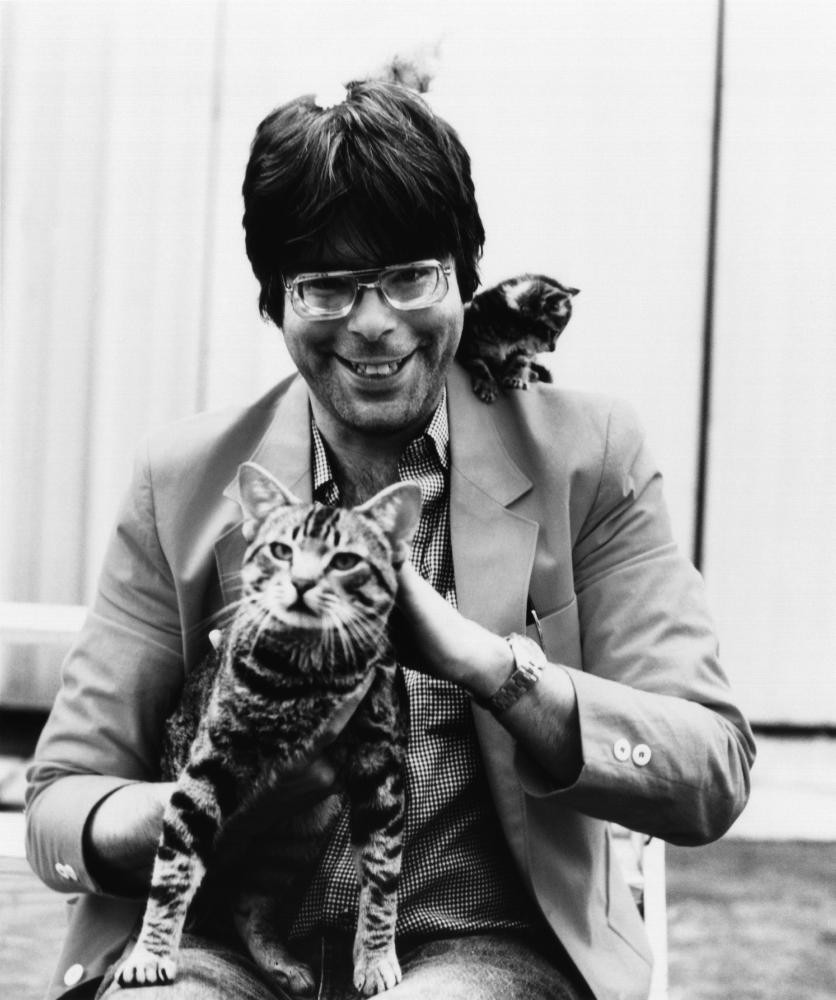 Stephen King peering over his glasses, with "Cat's Eye Stephen King" text overlay
Stephen King peering over his glasses, with "Cat's Eye Stephen King" text overlay
Quitters, Inc.: A Chillingly Satirical Opening
The first segment, Quitters, Inc., often considered the film’s highlight, masterfully blends horror and satire. Even as a child, the story’s dark humor and unsettling dream sequences were captivating. Quitters, Inc. is the most mature of the three tales, offering a biting social commentary wrapped in a horror-thriller narrative that could easily stand alone as a feature film. James Woods, as Dick Morrison, immediately sets a tone of unease, his frantic energy driving the story. Alan King shines as Dr. Vinny Donatti, the menacing yet jovial owner of Quitters Inc., a company with extreme methods to help people quit smoking.
Dr. Donatti’s methods are far from conventional. He’s a corporate bully, masking sadism with a veneer of concern. His rationale? Desperate smokers are prone to deceit and unreliability, justifying extreme measures. Donatti’s surveillance is absolute, his tactics ranging from breaking and entering to electrocution and psychological torture. Nothing is sacred, not even Morrison’s infant daughter, played by a young Drew Barrymore. Morrison’s initial anxieties about nicotine withdrawal soon pale in comparison to the terrifying reality of Quitters, Inc., and the film’s twist reveals King at his most wickedly playful.
Quitters, Inc. serves as a sharp satire of Reagan-era America’s burgeoning health obsession. In a time when the dangers of smoking and unhealthy habits were becoming mainstream concerns, this segment taps into societal anxieties with dark humor. It’s a relatable horror for anyone overlooking their vices, a mirror reflecting our collective denial.
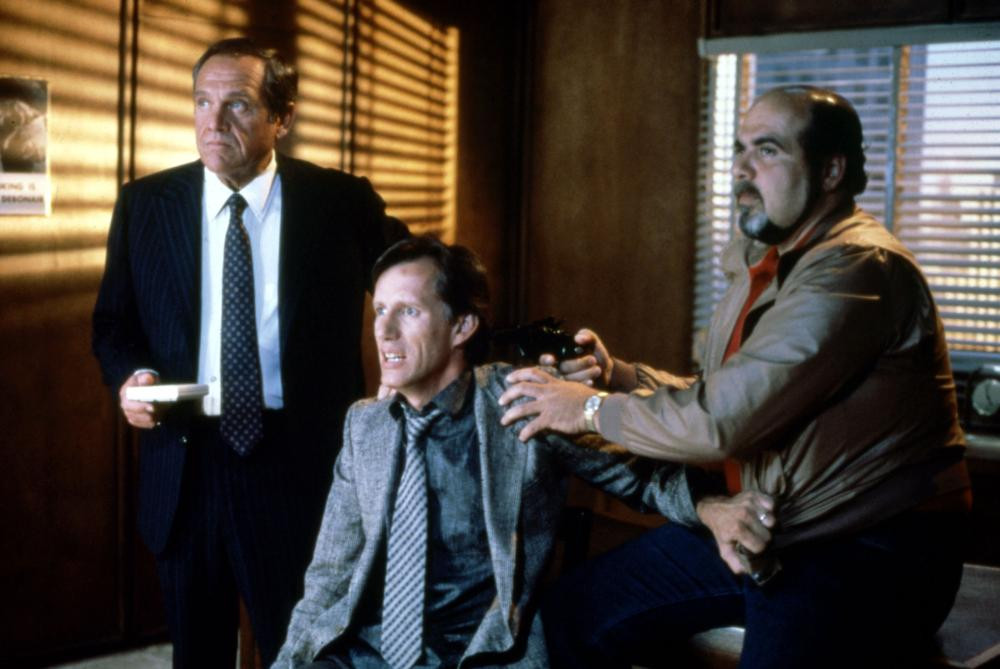 James Woods in a tense scene from Quitters Inc. segment of Cat's Eye movie
James Woods in a tense scene from Quitters Inc. segment of Cat's Eye movie
The Ledge: High-Stakes Suspense on a Hotel Ledge
The Ledge, the second segment, maintains the macabre tone with a thrillingly suspenseful narrative. King’s darkly playful side is again on display in a more traditional, yet highly effective tale. Robert Hays, known from Airplane!, delivers a compelling performance as Stan Norris, a philandering tennis pro who finds himself in a deadly game orchestrated by Cressner, the vengeful husband. Kenneth McMillan embodies malevolence as Cressner, a ruthless millionaire whose casual cruelty is evident from the outset, foreshadowing the deadly wager to come.
Cressner presents Norris with a horrifying choice: walk the narrow ledge of his high-rise hotel or face prison on trumped-up drug charges. Success means freedom, his wife, and a fortune; failure means certain death. But this is Stephen King, and the game is rigged. Beyond natural perils like wind and pigeons, Cressner has further deadly surprises in store. However, when Norris manages to outmaneuver Cressner, the story takes a darkly satisfying turn.
The Ledge is a masterclass in suspense, elevated by a shocking twist that subverts expectations. It taps into primal fears of heights and the desire for instant karmic justice. King masterfully crafts a morally ambiguous scenario, forcing audiences to root for a flawed protagonist undergoing a terrifying ordeal that, in some twisted way, feels deserved. It’s horror anthology storytelling at its most compelling.
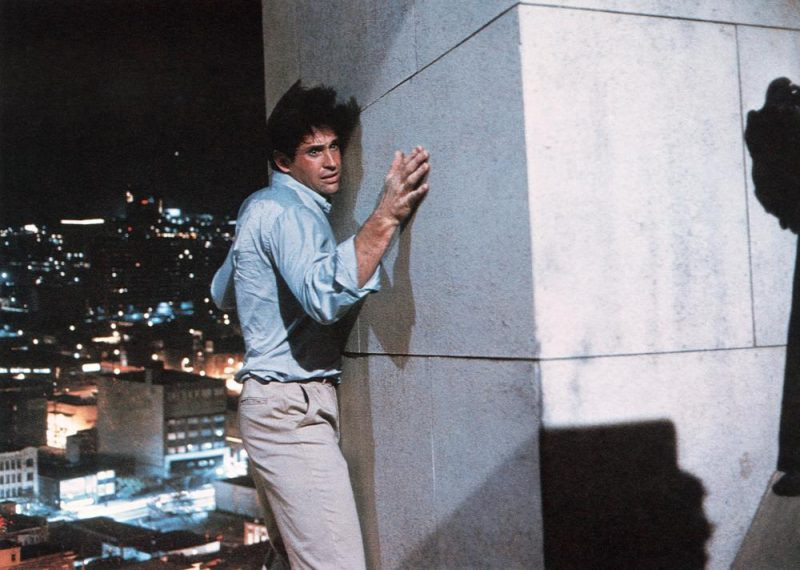 Robert Hays carefully navigating the ledge in The Ledge segment of Stephen King's Cat's Eye
Robert Hays carefully navigating the ledge in The Ledge segment of Stephen King's Cat's Eye
The General: A Monster in the Bedroom
The final segment, The General, shifts gears into a more overtly cinematic monster movie, reminiscent of Spielberg’s Amblin era. The impressive set design features a giant-sized bedroom built to accommodate Carlo Rambaldi’s creature, a troll-like demon brought to life through animatronics and practical effects. Rambaldi, renowned for his work on Alien, King Kong, and E.T., creates a truly menacing monster lurking behind the walls of young Amanda’s (Drew Barrymore) bedroom. The titular cat, General, a stray who has journeyed throughout the film, arrives at Amanda’s home and becomes her valiant protector against the creature. The General is the most commercially oriented of the three segments, delivering crowd-pleasing thrills and a satisfying resolution.
While narratively simpler than the preceding segments, The General is visually spectacular. The monster’s POV shots, navigating Amanda’s room, were innovative for the time, showcasing Teague’s directorial flair. As a childhood favorite, The General‘s monster-under-the-bed premise is pure nightmare fuel, especially the chilling scene where the creature attempts to steal Amanda’s breath, a superstition ironically linked to cats, making The General a suspect in the eyes of Amanda’s mother.
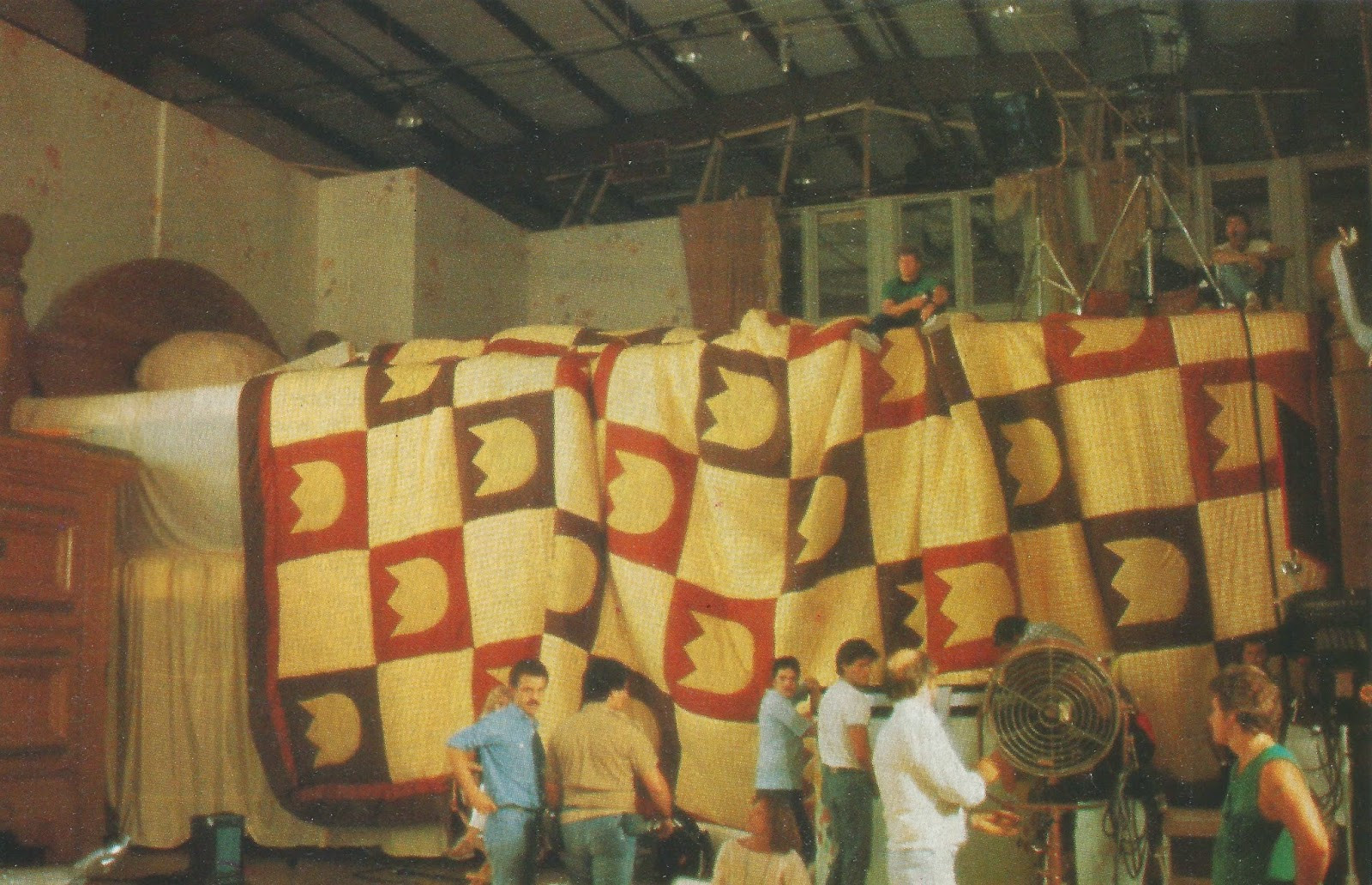 Drew Barrymore in The General segment of Cat's Eye movie, with a focus on childlike wonder and slight fear
Drew Barrymore in The General segment of Cat's Eye movie, with a focus on childlike wonder and slight fear
Cat’s Eye holds the distinction of being the first Stephen King movie to receive a PG-13 rating, a newly established rating at the time, influenced by Spielberg’s desire to accommodate the darker tones of family-friendly films like Gremlins and Indiana Jones and the Temple of Doom. The General segment, despite its scares, clearly targets a younger audience with its monster-in-the-closet scenario. It’s popcorn horror, undeniably entertaining and surprisingly dark at moments, particularly in the monster’s gruesome demise involving a fan and record player.
However, Stephen King’s Cat’s Eye movie is ultimately geared towards adults. Beyond The General, the film features mature themes, including decapitations, drug references, and unsettling moments of torture that challenge our moral comfort zones. The cat interludes, connecting the segments, sometimes feel like a studio attempt to broaden the film’s appeal to younger viewers, creating a slight commercial ambiguity. The studio’s decision to cut Teague’s prologue further contributed to a sense of disorientation for audiences.
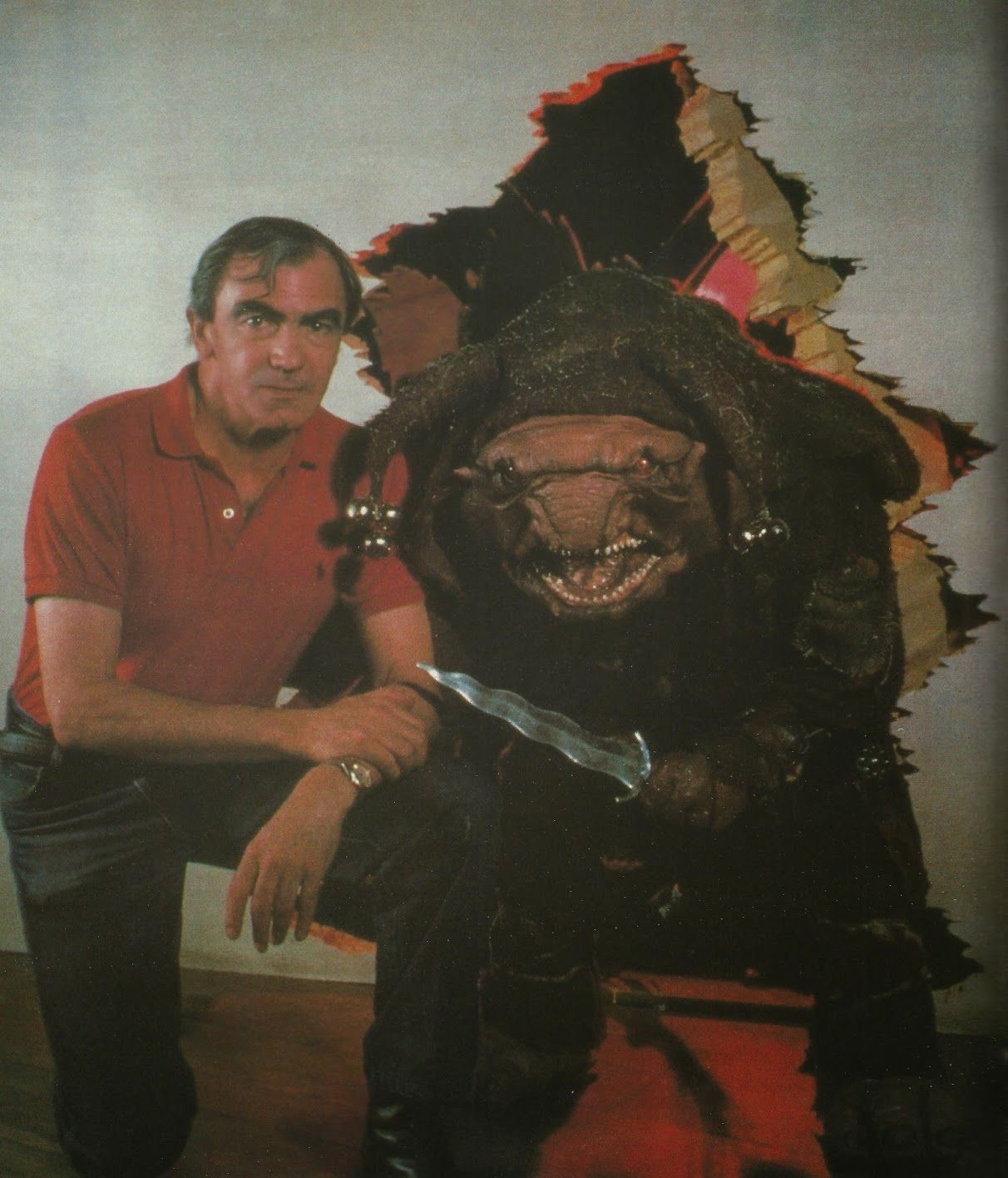 Cat's Eye movie promotional image showcasing the cat and Drew Barrymore
Cat's Eye movie promotional image showcasing the cat and Drew Barrymore
Despite its commercial tightrope walk, Cat’s Eye‘s tonal ambiguity has aged remarkably well, arguably enhancing its appeal for adult audiences today. As a horror anthology, it remains exceptional. Teague’s direction is confident without being intrusive, a quality shared by other successful King adaptations like Stand By Me, Misery, and The Shawshank Redemption, which prioritize story and character. While King is celebrated for his novels, Cat’s Eye underscores his mastery of the short story format, perfectly showcasing his ironic horror and twist-ending prowess on the cinematic stage.
Cooling Down: The kills in Cat’s Eye are sparse but impactful, maximizing catharsis. The standout is undoubtedly the monster’s demise in The General, meeting a gruesome end via a fan’s blades.
Smoking Kills: Cat’s Eye‘s satirical edge is pure King, most evident in Quitters, Inc., with its electric shock punishments and surreal cigarette-packet dream sequences. James Woods’s desperate craving for nicotine, even with his family at risk, resonates universally. The segment cleverly critiques the 80s health craze, portraying a world where quitting smoking leads to new, absurd restrictions. The idea of such extreme corporate control is outlandish, yet it cleverly satirizes real-world corporate overreach.
Ain’t I Great! True to King’s playful nature, Cat’s Eye is peppered with self-references. James Woods mocks The Dead Zone on TV, the cat narrowly avoids Christine and Cujo references, and Amanda’s mother reads Pet Sematary. Cressner in The Ledge reads the Penthouse issue featuring King’s original story.
Stephen King’s Cat’s Eye movie is a superior horror anthology, blending humor and horror with King’s signature touch. Exploiting universal fears and superstitions, it remains a satisfying and underrated gem from the 80s.
Edison Smith
 Cat's Eye movie poster featuring a cat's eye and tagline
Cat's Eye movie poster featuring a cat's eye and tagline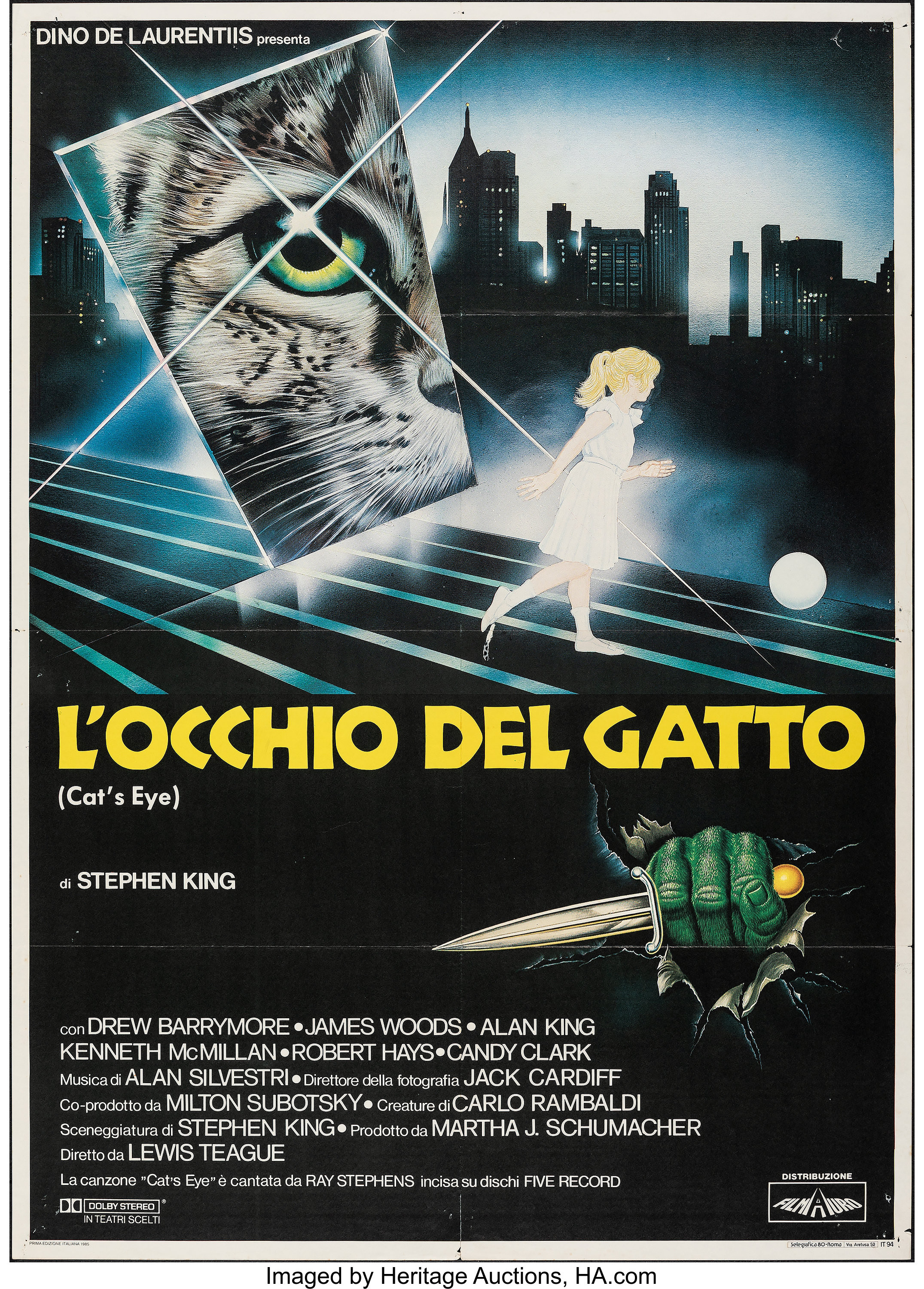 Italian Cat's Eye movie poster with a stylized cat eye and cityscape
Italian Cat's Eye movie poster with a stylized cat eye and cityscape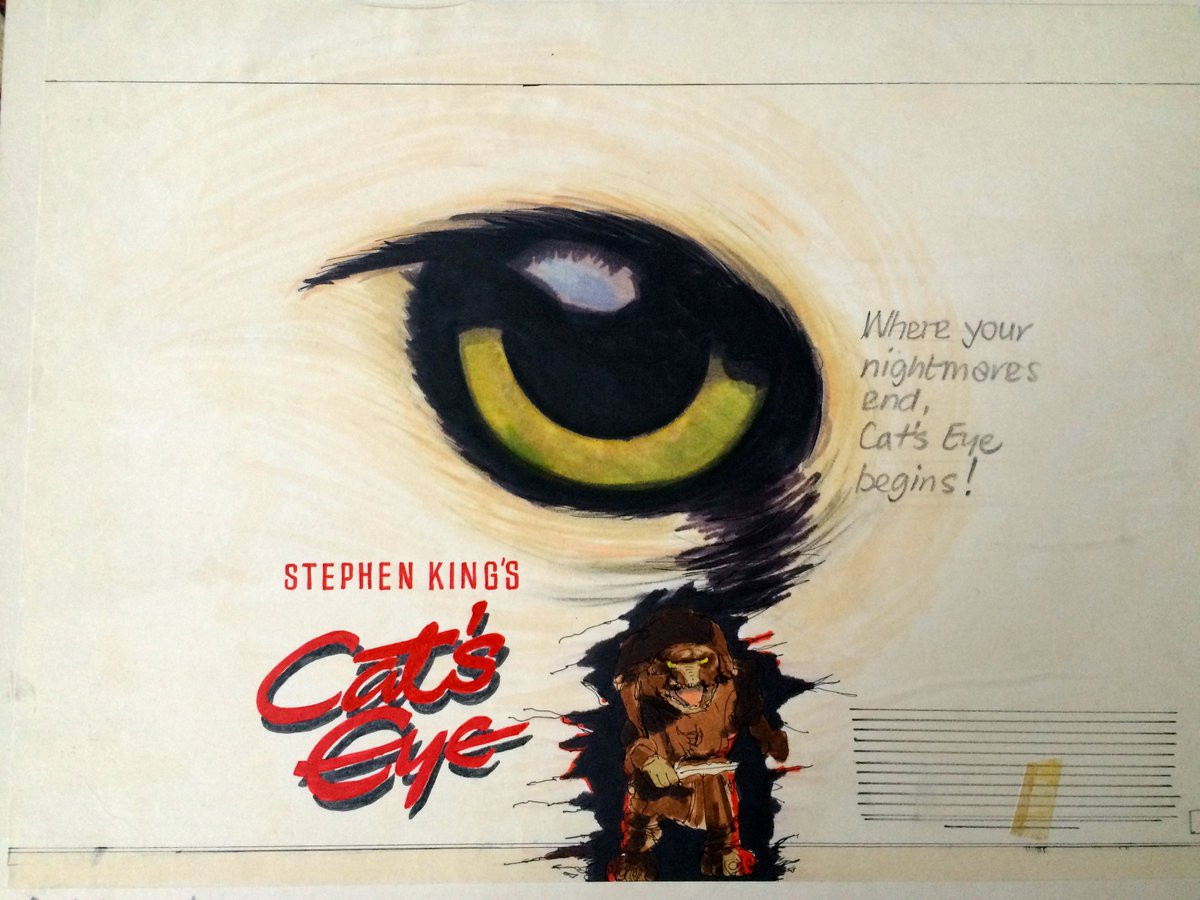 Conceptual Cat's Eye movie poster with a menacing cat and cityscape
Conceptual Cat's Eye movie poster with a menacing cat and cityscape

